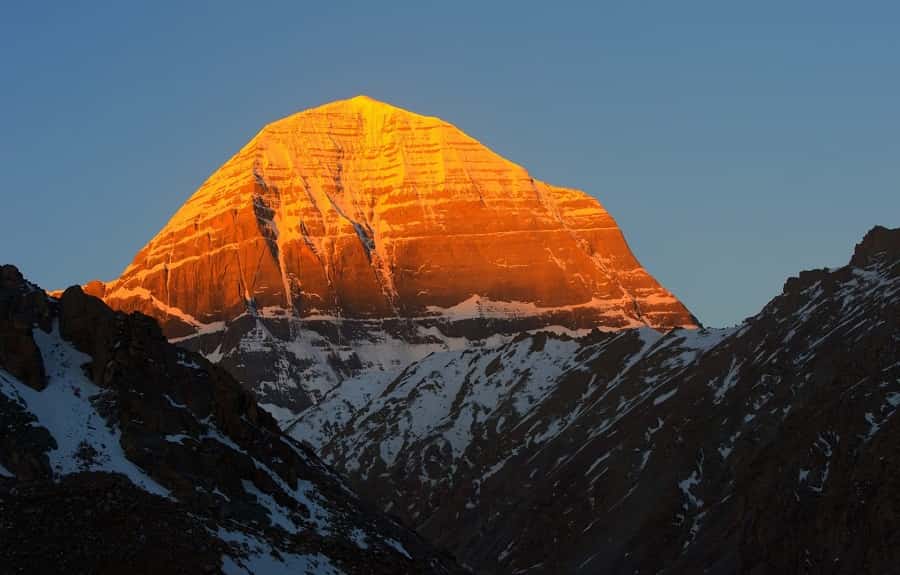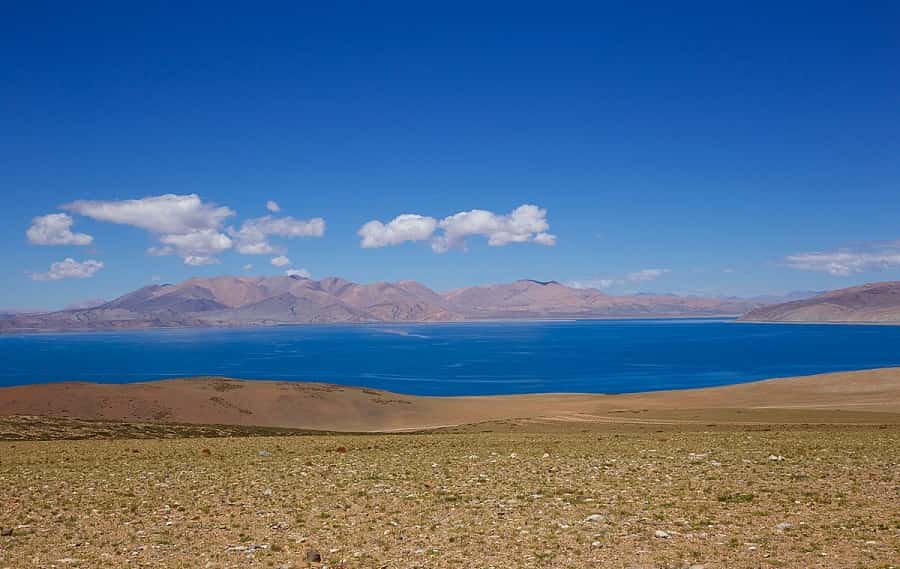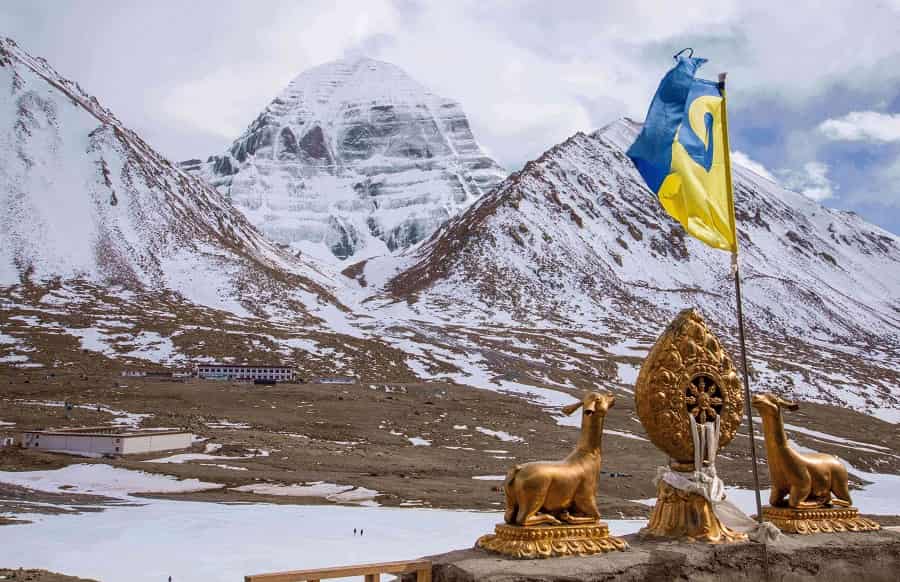Kailash Mansarovar: A Spiritual Journey to the Abode of the Gods
Kailash Mansarovar is a place that holds great spiritual significance for people of many religions. Located in the remote western region of Tibet, this mystical land is home to the holy Mount Kailash and the sacred Mansarovar Lake. For centuries, people have been undertaking the arduous journey to Kailash Mansarovar to seek spiritual enlightenment and experience a transformational journey.

The Significance of Kailash Mansarovar
Kailash Mansarovar holds a special place in Hinduism, Buddhism, Jainism, and Bon religions. For Hindus, Kailash Mansarovar is the abode of Lord Shiva and is considered to be the center of the universe. According to Buddhist beliefs, Kailash Mansarovar is the home of the Buddha Demchok, and Jainism associates Kailash Mansarovar with the first Tirthankara, Rishabhdev. The Bon religion, which is indigenous to Tibet, also considers Kailash Mansarovar to be a sacred site.
- Suggested Tour: Kailash Mansarovar Yatra Tour Packages
The Pilgrimage to Kailash Mansarovar
The journey to Kailash Mansarovar is not an easy one. Travelers have to navigate rugged terrain and harsh weather conditions. The best time to visit Kailash Mansarovar is from May to September, when the weather is relatively mild. The Kailash Mansarovar Yatra, a pilgrimage that takes place annually, is one of the most popular ways to experience Kailash Mansarovar.
The Kailash Mansarovar Yatra begins in the small town of Darchen and takes travelers on a journey of around 52 kilometers around the holy Mount Kailash. The trek is considered to be one of the toughest treks in the world, with steep ascents and descents. The Kailash Mansarovar Yatra is not for the faint-hearted, but those who undertake it are rewarded with an unforgettable spiritual experience.
The Surroundings of Kailash Mansarovar
The holy Mount Kailash is the centerpiece of Kailash Mansarovar. This mountain is considered to be the earthly manifestation of the mythical Mount Meru, the axis mundi of Hindu and Buddhist cosmology. The Mansarovar Lake, which is located at the foot of Mount Kailash, is another sacred site. The lake is believed to be the earthly embodiment of the purest form of water, and pilgrims often take a dip in its holy waters.

Rakshastal Lake, located in the vicinity of Mansarovar Lake, is another significant site for travelers to Kailash Mansarovar. According to Hindu mythology, Rakshastal Lake is home to demons and evil spirits. The Guge Kingdom, which was an ancient kingdom that flourished in western Tibet, is also an important site to visit while in Kailash Mansarovar.
The Spiritual Experience of Kailash Mansarovar
Kailash Mansarovar is believed to be a place of great spiritual energy. Many spiritual seekers believe that a pilgrimage to Kailash Mansarovar can help them to shed their past karma and attain spiritual enlightenment. The journey to Kailash Mansarovar is also said to be a transformational one, with travelers experiencing a deep sense of peace and oneness with the universe.
The Challenges of Visiting Kailash Mansarovar
Visiting Kailash Mansarovar comes with its own set of challenges. Travelers require special permits and visas to enter Tibet and visit Kailash Mansarovar. Altitude sickness is another challenge that travelers need to be mindful of, as the region’s high altitude can cause severe health problems. Medical facilities in Kailash Mansarovar are limited, and travelers need to be prepared to deal with any medical emergencies. The weather conditions in Kailash Mansarovar can also be harsh, with sudden snowstorms and strong winds.

Best Time to Visit
The best time to visit Kailash Mansarovar Yatra is during the summer months, from May to September. This period offers the most favorable weather and conditions for the pilgrimage. Here are some reasons why this time is considered the best:
Weather: During the summer months, the weather in the Kailash Mansarovar region is relatively mild and pleasant. The temperatures range from 15°C to 25°C (59°F to 77°F) during the day, making it more comfortable for trekking and outdoor activities. However, it can still get cold at night, so warm clothing is necessary.
Accessibility: The roads leading to Kailash Mansarovar are open and accessible during the summer season. The snow and ice from winter have melted, making it easier to reach the pilgrimage site. This ensures a smoother journey and minimizes the risk of road closures due to inclement weather.
Pilgrimage Circumambulation: One of the significant highlights of the Kailash Mansarovar Yatra is the circumambulation (parikrama) of Mount Kailash. The circuit around the mountain is approximately 52 kilometers (32 miles) long and involves walking at high altitudes. The summer season offers better trekking conditions with less snow, allowing pilgrims to complete the parikrama more comfortably.
Religious Festivals: The summer months coincide with several important religious festivals, such as Saga Dawa and Guru Purnima, which are celebrated in the vicinity of Kailash Mansarovar. These festivals add a spiritual and festive atmosphere to the pilgrimage, enhancing the overall experience.
Mansarovar Lake Accessibility: The holy Mansarovar Lake, located near Mount Kailash, is a significant part of the pilgrimage. During the summer season, the lake is accessible, allowing pilgrims to take a dip or perform religious rituals in its sacred waters.
It’s important to note that the Kailash Mansarovar region is subject to high altitude and unpredictable weather conditions. Even during the summer months, temperatures can vary, and weather patterns can change rapidly. It’s advisable to check the weather forecast and be prepared for fluctuations in temperature, precipitation, and strong winds.
Overall, the summer season offers the most favorable conditions for the Kailash Mansarovar Yatra, providing a balance between comfortable weather, accessibility, and the opportunity to engage in religious and cultural festivities.
- Suggested Tour: Kailash Mansarovar Helicopter Yatra package
How to Reach Mansarovar Yatra
Reaching Mansarovar Yatra involves several modes of transportation due to its remote location. Here are the common routes to reach Mansarovar:
1- Kathmandu, Nepal Route:
- Fly to Tribhuvan International Airport in Kathmandu, Nepal, which serves as the gateway to Mansarovar Yatra.
- Obtain the necessary permits and visa for the pilgrimage. These permits can be acquired through registered travel agencies or tour operators.
- Travel by road from Kathmandu to the Nepal-China border town of Rasuwagadhi/Syabrubesi. This journey takes approximately 6-8 hours.
- Cross the border and continue the journey by road through Kyirong (Gyirong) in Tibet, China.
- From Kyirong, travel further to Saga, Manasarovar Lake, and finally to Mount Kailash, following the designated route for the yatra.
Indian Route:
- Fly to Delhi, the capital city of India, or reach Delhi by other means of transportation.
- From Delhi, take a domestic flight to reach the nearest airport to the Mansarovar region, either Lucknow or Allahabad.
- Proceed to the Indian border town of Nepalgunj in the state of Uttar Pradesh.
- From Nepalgunj, travel by road to the Nepal-China border town of Hilsa/Simikot.
- Cross the border and continue the journey through Taklakot (Purang), Saga, Manasarovar Lake, and finally to Mount Kailash, following the designated route for the yatra.
It’s important to note that reaching Mansarovar Yatra requires permits and approvals from the respective authorities of Nepal and China. It is advisable to engage with registered travel agencies or tour operators who specialize in organizing the pilgrimage. They can assist with obtaining permits, arranging transportation, and providing necessary guidance throughout the journey.
The routes and logistics may vary based on the current regulations and conditions imposed by the authorities. It’s essential to stay updated with the latest travel advisories and follow the guidelines provided by the organizing agencies to ensure a smooth and successful journey to Mansarovar.
Travel Tips for Kailash Mansarovar Yatra
Plan in Advance: The Kailash Mansarovar Yatra is a challenging and physically demanding pilgrimage. It is essential to plan well in advance to secure permits, book accommodations, and make travel arrangements.
Physical Fitness: The pilgrimage involves high altitudes and long treks, so it’s crucial to be physically fit. Engage in regular exercise and stamina-building activities like walking, jogging, and hiking before the trip. Consult your doctor for any necessary medical check-ups and advice.
Acclimatization: The Yatra takes you to altitudes of over 5,000 meters (16,400 feet). It’s important to acclimatize properly to avoid altitude sickness. Plan for a gradual ascent, allowing time for your body to adjust to the thin air. Stay hydrated and listen to your body, resting when needed.
Pack Wisely: Pack essential items such as warm clothing, sturdy trekking shoes, sunglasses, sunscreen, a hat, and a first aid kit. Also, carry some snacks, energy bars, and water bottles for the journey. Don’t forget to bring your travel documents, permits, and a copy of your medical records.
Stay Hydrated: Proper hydration is crucial at high altitudes. Drink plenty of water throughout the day to prevent dehydration. It’s also advisable to carry water purification tablets or a portable water filter to ensure a safe water supply.
Respect Local Customs and Culture: The Kailash Mansarovar region is considered sacred by multiple religions. Respect the local customs, traditions, and religious sites. Dress modestly and behave respectfully towards the local communities and fellow pilgrims.
Weather Considerations: The weather in the Kailash Mansarovar region can be unpredictable. Pack warm clothing, as temperatures can drop significantly, especially during the nights. Be prepared for rain, snow, and strong winds by carrying waterproof and windproof gear.
Take it Slow: The pilgrimage is physically demanding, and it’s essential to pace yourself. Trek at a comfortable speed, take regular breaks, and listen to your body’s signals. Avoid overexertion, as it can lead to exhaustion or altitude-related issues.
Travel Insurance: It’s highly recommended to have comprehensive travel insurance that covers medical emergencies, trip cancellations, and evacuation services. Check with your insurance provider to ensure you have appropriate coverage for high-altitude journeys.
Respect the Environment: Help preserve the pristine beauty of the region by practicing responsible tourism. Dispose of waste properly, follow designated trails, and avoid disturbing the natural habitat. Leave the place as you found it, respecting the sanctity of the surroundings.
Conclusion
Kailash Mansarovar is a place of great spiritual significance, and a pilgrimage to this mystical land can be a life-changing experience. The enduring legacy of Kailash Mansarovar is a testament to the profound impact it has had on spiritual seekers for centuries.
FAQs
Is it safe to travel to Kailash Mansarovar?
Ans. Traveling to Kailash Mansarovar comes with its own set of challenges, but with proper preparation, it can be a safe and rewarding journey.
What is the best time to visit Kailash Mansarovar?
Ans. The best time to visit Kailash Mansarovar is from May to September, when the weather is relatively mild.
How difficult is the Kailash Mansarovar Yatra?
Ans. The Kailash Mansarovar Yatra is considered to be one of the toughest treks in the world, with steep ascents and descents.
Why is Kailash Mansarovar important in Hinduism?
Ans. Kailash Mansarovar is considered to be the abode of Lord Shiva in Hinduism and is believed to be the center of the universe.
What is the spiritual significance of Kailash Mansarovar?
Ans. Kailash Mansarovar is believed to be a place of great spiritual energy, and a pilgrimage to this mystical land can help seekers to attain spiritual enlightenment.
We wanted to go Kelash and need your help to visit.
please contact us on given number, we will try to help you
I want to reach God but as Shiva wants , whenever he needs me I will pretend to be her,but I wish as soon as possible I will join you
Want to go to Kailash man sarovar. Please guide us
Planning to Kailash Mansarovar Pilgrimage, what are the package available? We are a small group of 4pax.
Please share your WhatsApp number with us or you can also contact us on this WhatsApp number:- +91 97178 91140
Hello
I want to go to Kailash Mansarovar.
When is the best time to visit and what is the package?!?
Also how to get visas and permits for pilgrimage?!?
Thank You
Hello Sir, Please contact us on:- 9717891140 (WhatsApp Number)
Hi
I am a 67 years old senior citizen from Kolkata. I wish to have darshan and parikrama of Mount Kailash Manasarovar in 2024. Please give me details and schedule date of Yatra in 2024. Also the cost involved in yatra from Lucknow by Road, Air, Helicopter and back to Lucknow.
Please share your number or contact us on WhatsApp:- 9560897784
Hi, my Husband 56 years and i 52 years are Interested to do Kailash yahra.. we like to have priest included. We prefer to be included in a big group too. Kindly quote your package
Hello Mam, Please Share Your Number or Contact at 95608 97784 via call or WhatsApp
Hi I am interested in kailash mansorvar yatra during full moon in Aug 24.also want to do Charan Sparash
On north side. I am stravelling on my own and have
Overseas passport.
I need full itinerary including food and accommodation.
Please share your number with us or you can directly contact us on WhatsApp: 9958766100
Very good travel information about Kailash Yatra.
Very good travel information about Kailash Yatra. lots of good informations
I want to travel to Kailas Manassarover & Mount Kailas in the month ofJuly August. I am 74 years old and in good health.
Please contact us on 9958766100 (WhatsApp Only)
நான் மானஸ்ரவர் கைலாஷ்
செல்ல விரும்புகிறேன்
உங்கள் தொடர்பு எண் தேவை
எனது எண் 9443367016
தொடர்பு கொள்ளவும்